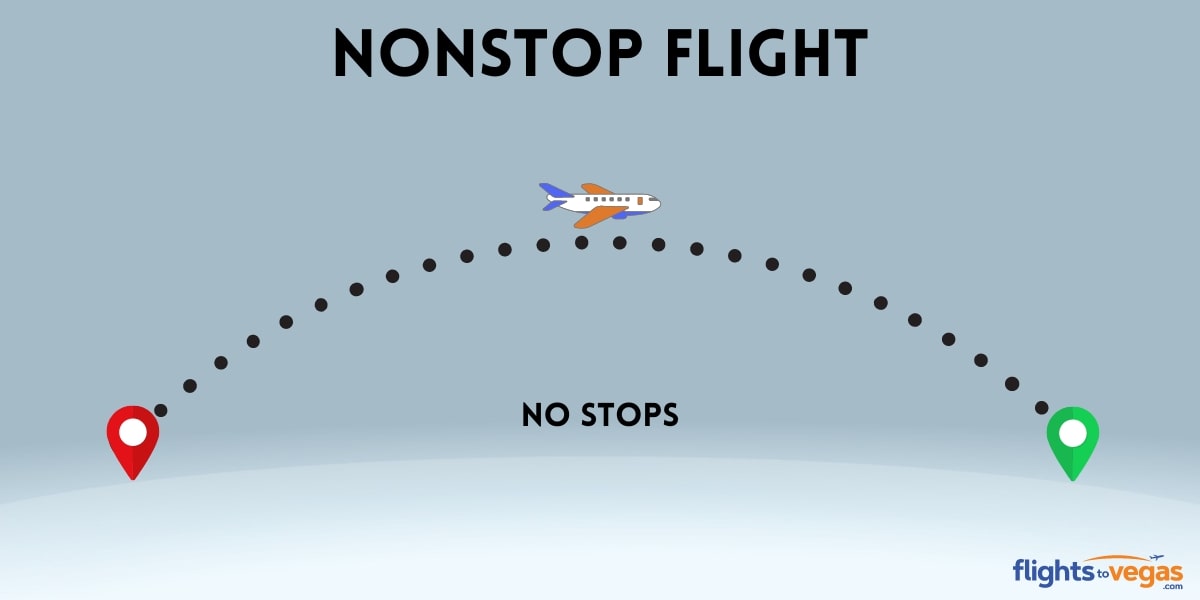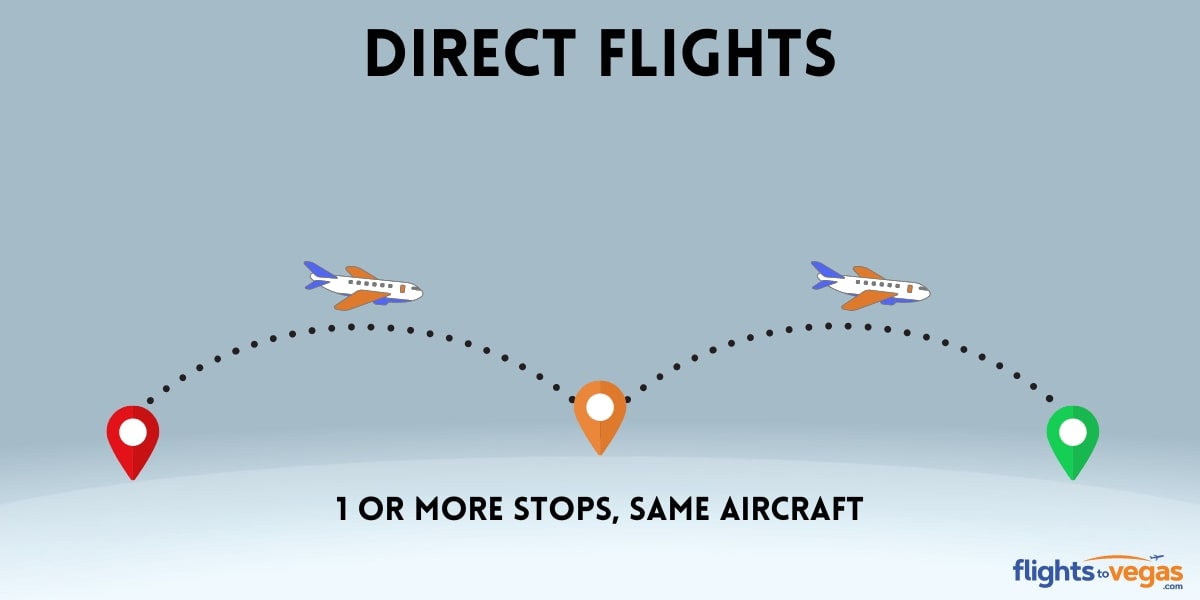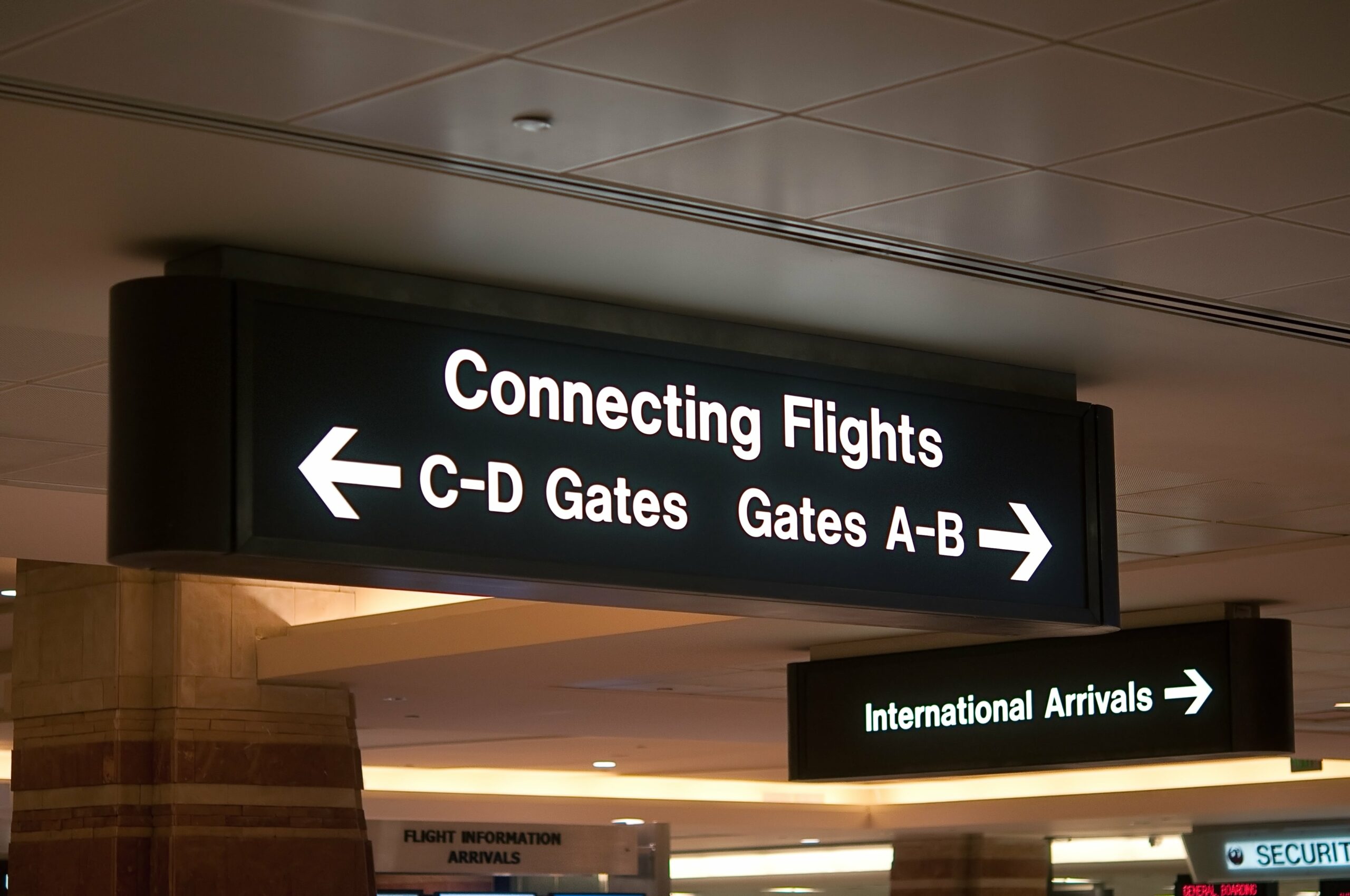Direct vs Nonstop Flights – What’s The Difference?
By

Table of Contents
Introduction
Whether for business or leisure, traveling by air often presents many choices – the most perplexing one being the choice between direct vs nonstop flights. While some travelers relish the convenience of a nonstop journey, others may prefer the potential cost savings and increased flexibility that direct flights can offer. Let’s dive into the differences to help you decide better the next time you fly.
Understanding the Nomenclature: What are Nonstop Flights?
As the term implies, Nonstop flights whisk passengers from the departure airport to their destination without stopping en route. Your flight will take off from your initial airport and land at your destination airport without any stops.

Advantages of Nonstop Flights
Time-efficiency
Arguably the most significant advantage of nonstop flights is time efficiency. Since these flights omit layovers, they often offer the shortest travel time. This can be particularly beneficial for business travelers or those with a limited time window for their journey.
Lower Risk of Delays or Missed Connections
With nonstop flights, the worry of missing a connecting flight due to a delay in your initial flight is eliminated. Once you depart, you know that your next stop is your final destination. This can significantly reduce stress levels, especially for those usually anxious about making tight connections.
Reduced Baggage Handling
Checked bags on nonstop flights are less likely to be mishandled as they remain on the same aircraft throughout the journey. Reducing the chances of your luggage getting lost or delayed due to multiple flight transfers.
Disadvantages of Nonstop Flights
Higher Costs
Due to their convenience and demand, nonstop flights often have a higher price tag. Consequently, budget-conscious travelers may find these flights less appealing.
Limited Flight Choices
The number of nonstop flights between two cities can be limited, mainly if the airports aren’t among the busiest. This can restrict your options in terms of flight times and may require you to adjust your schedule to match the available flights.
Limited Airline Choices
Not all airlines offer nonstop flights between every pair of airports in their network. This could mean compromising on your preferred airline or frequent flyer program to avail the convenience of a nonstop flight.
Exploring the Concept: What are Direct Flights?
Contrary to common belief, direct flights do not imply a journey without stops. A direct flight may make one or more stops en route to the final destination. Still, the flight number remains the same, and passengers stay on the same aircraft or continue with the same flight number even if a change of aircraft is required.

Advantages of Direct Flights
No Luggage Hassles
On a direct flight, your checked luggage stays on the same plane, eliminating the need to lug it around during layovers, and making your journey more comfortable, especially if you’re toting around heavy suitcases.
More Affordable
Direct flights can often be more budget-friendly than their nonstop counterparts. This cost advantage can make direct flights a more appealing option for price-sensitive travelers.
Breaks in Long Journeys
Direct flights can provide a welcome break during long-haul journeys. The stopover allows you to stretch your legs, grab a meal, or even catch up on emails before the next leg of your trip.
Disadvantages of Direct Flights
One potential downside of direct flights is the inconvenience of stopovers, which can prolong your overall travel time. Additionally, there can be ‘teething issues,’ such as unexpected delays or changes in the schedule due to the stopover.
Another Noteworthy Contender: Connecting Flights
In addition to nonstop and direct flights, there are also connecting flights. These flights require you to change planes at an intermediate point, termed as a ‘hub.’ You would have two different flights (with distinct flight numbers) to reach your final destination.

Advantages of Connecting Flights
Cost-effectiveness
Connecting flights are often the most budget-friendly option for air travel. They can be a boon for travelers looking to save on flight costs, especially for long-haul international journeys.
Disadvantages of Connecting Flights
Baggage Handling Issues
A notable downside of connecting flights is the potential for luggage complications. In scenarios where your bags aren’t checked to your end destination, you might find yourself navigating from one terminal to another, juggling your luggage – a situation that can quickly become a hassle.
Time-consuming
Connecting flights can significantly extend your overall travel time. Waiting for the connecting flight and the additional flight time can make your journey lengthy and potentially tiring.
The Evolution of Long-Haul Flights
Long-haul flights have significantly evolved in recent years, with airlines consistently pushing the envelope regarding flight duration. The emergence of ultra-long-haul flights, like the 19-hour journey from Newark Liberty International to Singapore by Singapore Airlines, has rewritten air travel rules. These super-lengthy flights strive to reduce layovers and provide a more straight-shot route, albeit at the expense of more time in the air.
The Perks of Ultra-Long-Haul Flights
The primary appeal of ultra-long-haul flights is the significant reduction in travel time. These flights eliminate the need for layovers and associated potential delays, offering a more streamlined journey. Moreover, many travelers appreciate the ability to settle in and enjoy the flight without the interruption of a layover.
The Drawbacks of Ultra-Long-Haul Flights
The convenience of ultra-long-haul flights does come with a few potential downsides. Firstly, the cost of these flights can be substantially higher than other options. Additionally, spending an extended period in the confined space of an aircraft can be physically and mentally taxing. Some individuals may also have health considerations, such as a higher risk of blood clots, that make ultra-long-haul flights less feasible.
The Future of Long-Haul Flights
As technology advances and airlines strive to improve passenger comfort, the trend of super-long-haul flights is likely to continue. Airlines are implementing innovative solutions, such as jetlag-reducing lighting and improved in-flight meals, to enhance the passenger experience on these ultra-long journeys. However, these flights’ commercial success and long-term viability remain to be seen as factors like rising oil prices and changing consumer preferences come into play.
Finding the Right Flight: Practical Considerations
Several practical considerations can guide your choice when deciding between direct vs nonstop flights.
Cost
If cost is one of the main factors considered in your decision. Nonstop flights, while convenient, tend to be more expensive than direct or connecting flights. If budget concerns you, consider the latter options.
Time
A nonstop flight may be your best bet if you’re strapped for time. It will get you to your destination quickly, without the hassles of layovers or multiple flights.
Flexibility
Direct and connecting flights can offer more flexibility in terms of scheduling. They often have plenty of flight times to choose from, allowing you more options in selecting departure time that is most convenient for you.
Health and Comfort
Long-haul flights, more so the nonstop ones, can be quite draining. If you have health concerns or prefer not to spend a prolonged period in the air, you might want to consider direct or connecting flights.
And there you have it…
The decision between direct and nonstop flights comes down to what matters most to you and your travel needs. Whether you’re looking at cost, comfort, speed, or flexibility, knowing the ins and outs of these flight choices can guide you to make a smart pick for your upcoming air travel journey. Happy travels!
Ready for your next journey? Check out our guide on Long-haul Flight Essentials to ensure you’re fully prepared for those long-haul flights.
For more exciting updates and insider tips on the best of Las Vegas, follow @melindasheckells
Share This
FAQ’s
Is it cheaper to fly direct or with stops?
Connecting flights (flights with stops) are often cheaper. However, direct or nonstop flights may be better options if time is of the essence.
Can I get off the plane at a stop in a direct or connecting flight?
Yes, you can. However, keep in mind that your luggage will continue to the final destination airport.
What does a one-stop flight mean?
A one-stop flight implies that the flight will make a stop at an intermediate airport before proceeding to the final destination.
What is the estimated flight price for nonstop, direct, and connecting flights?
The estimated flight price varies greatly depending on the route, airline, and time of booking. However, connecting flights are generally the least expensive, followed by direct and nonstop flights.
What is a layover in air travel?
A layover is a period spent at an intermediate airport between the departure and the final destination. During a layover, passengers may need to change planes.
How long can a layover be on a direct flight?
The length of a layover on a direct flight can vary greatly, from a few minutes to several hours. It largely depends on the specific flight schedule and the airline’s operations.
Are nonstop flights more environmentally friendly than direct or connecting flights?
Nonstop flights can be more environmentally friendly as they typically use less fuel than direct or connecting flights. This is because takeoffs and landings consume a significant amount of fuel.
What happens if I miss my connecting flight?
If you miss your connecting flight due to a delay in your initial flight, the airline will typically rebook you on the next available flight to your destination. However, policies can vary between airlines, so it’s best to check with your specific carrier.
Can I choose my direct or connecting flight layover location?
While you can’t typically choose your exact layover location, you can influence it by selecting specific flights when booking. Some booking platforms allow you to filter flights by layover airports.






